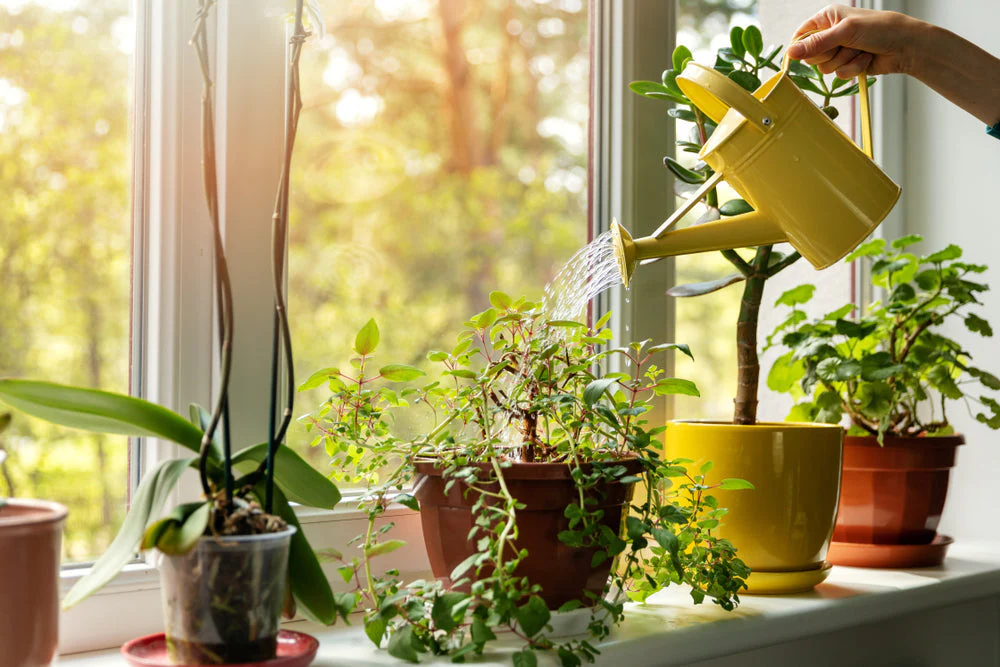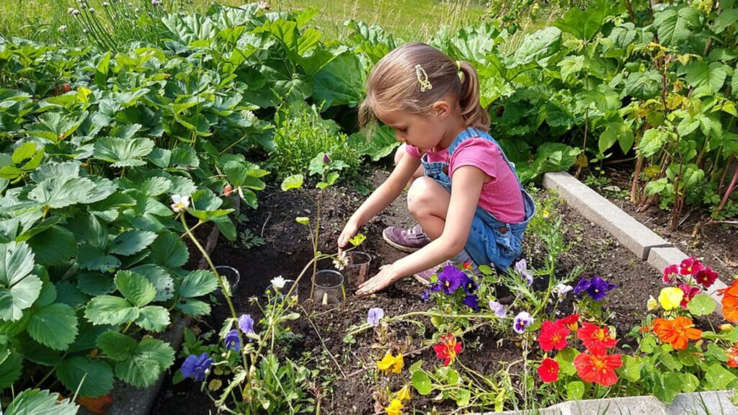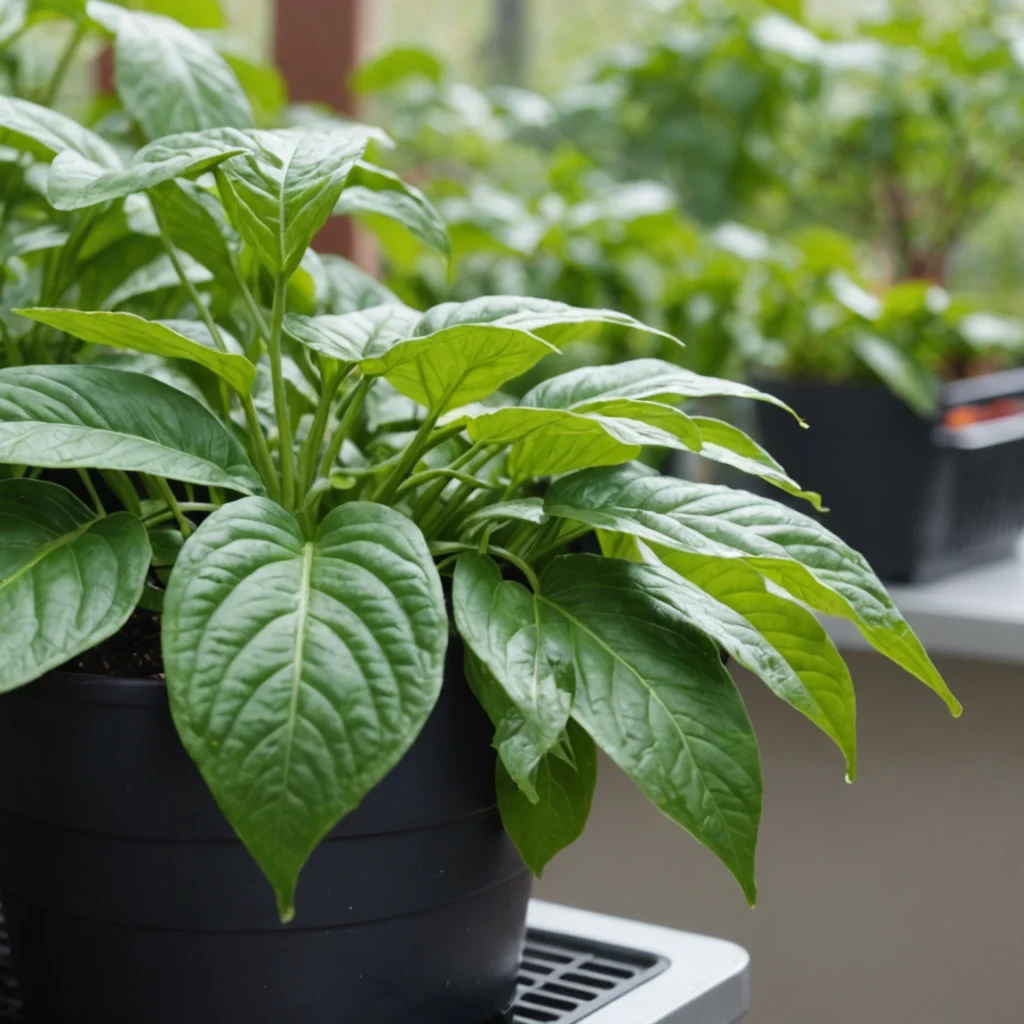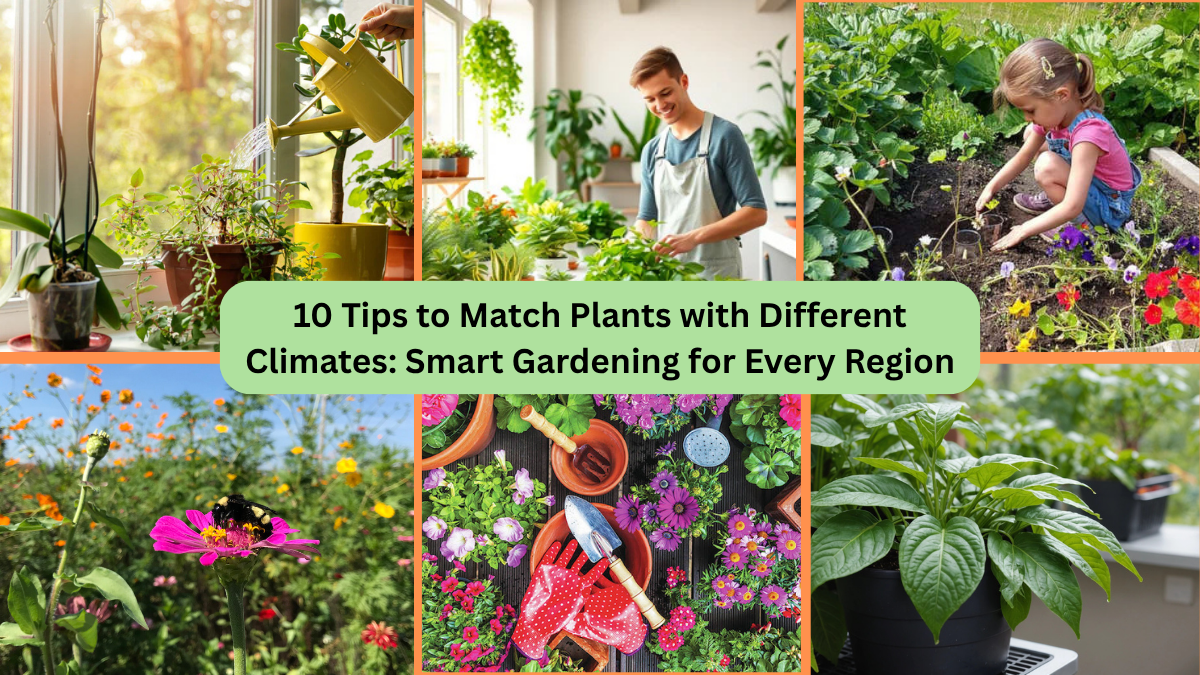One of the golden rules of successful gardening is “right plant, right place.” And one of the most crucial factors in choosing the right place is the climate. Every plant species has evolved to thrive in particular environmental conditions — whether it’s temperature, rainfall, humidity, or soil type. Ignoring this reality often leads to weak plants, stunted growth, and endless frustration for gardeners.
Fortunately, you don’t need to be a horticulturist to figure it out. With a little planning and smart observation, you can create a thriving garden by matching plants to your climate zone and microclimates. In this guide, we’ll share 10 essential tips to help you pair plants with the perfect conditions, ensuring your greenery flourishes beautifully year-round.

Why Climate Compatibility Matters in Gardening
Plants rely on their environment for survival, and when you align their natural needs with your garden’s conditions, everything works better. Climate influences:
- Temperature tolerance
- Sunlight exposure
- Humidity preference
- Soil moisture levels
- Resistance to pests and diseases
When you choose plants adapted to your climate, you’ll enjoy healthier growth, less maintenance, lower water bills, and greater year-round garden appeal. Now, let’s dive into those expert tips to help you garden smarter.

1. Know Your Climate Zone
The first step in climate-smart gardening is understanding your plant hardiness zone. The USDA Plant Hardiness Zone Map (or equivalent in your country) divides regions based on the average minimum winter temperatures.
For example:
- Zone 3-5: Cold winters, short growing seasons.
- Zone 6-8: Moderate winters, hot summers.
- Zone 9-11: Mild winters, long growing seasons.
Each plant species is labeled with the zone range it thrives in. Knowing your zone ensures you only select plants that can survive your area’s coldest and hottest extremes.
Tip: Find your zone online by entering your zip code on the USDA Plant Hardiness Zone website or using a similar local climate guide.

2. Understand Your Local Microclimates
Your garden may have several different microclimates within it, influenced by:
- Shade from trees or buildings
- Heat-retaining walls or patios
- Low-lying areas prone to frost pockets
- Wind-exposed open spots
- Sheltered corners
A sunny, sheltered corner may suit heat-loving plants, while a shaded area might be ideal for ferns or hydrangeas. Spend time observing sunlight, wind patterns, and moisture retention in different garden spots before planting.

3. Prioritize Native and Climate-Adapted Plants
Native plants have evolved in your region’s conditions for centuries. They typically require less water, fertilizer, and maintenance while attracting local pollinators and wildlife.
If native options are limited, look for climate-adapted plants—species that thrive in conditions similar to your climate. For example, Mediterranean herbs like rosemary, lavender, and thyme flourish in hot, dry zones.
Bonus Tip: Check with your local extension service or nursery for lists of native and adapted plants suitable for your area.

4. Group Plants by Climate and Water Needs
It’s smart to cluster plants with similar water, sunlight, and soil preferences together. This reduces competition, simplifies maintenance, and ensures optimal growing conditions for each group.
For instance:
- Keep drought-tolerant succulents together in a sunny, dry patch.
- Group shade-loving, moisture-loving plants like hostas and ferns in cool, damp corners.
- Plant tropical, humidity-loving species like hibiscus and elephant ears together in sheltered, wet areas.

5. Choose Plants for Seasonal Climate Changes
Consider how your climate shifts across seasons and choose plants accordingly. Some plants thrive during spring and summer but struggle in harsh winters. Others endure cold spells effortlessly.
Example:
- Annuals like petunias and zinnias shine in summer but can’t survive frost.
- Perennials like peonies and daylilies go dormant in winter but return year after year in colder zones.
Tip: Create a seasonal planting calendar based on your local frost dates and rainfall patterns.
6. Be Mindful of Humidity Levels
Some plants love humid air, while others prefer dry conditions. Tropical plants like orchids, caladium, and monstera demand high humidity. Conversely, plants like lavender, sage, and agave thrive in arid climates.
Solution:
- In dry areas, select drought-tolerant or desert plants.
- In humid regions, plant species resistant to fungal diseases and root rot.
Pro Tip: Use mulch to regulate soil moisture and increase humidity for sensitive plants if needed.
7. Use Windbreaks and Shelter Wisely
Wind exposure can damage tender plants and dry out soil quickly. If your garden is in a windy location, use natural windbreaks like hedges, fences, or walls to shelter delicate species.
Choose wind-tolerant plants like ornamental grasses, junipers, or sea thrift for exposed areas, while placing fragile, leafy plants in protected spots.
Tip: Group taller, tougher plants on the windward side of your garden to shield smaller, delicate ones.
8. Understand Soil Compatibility for Your Climate
Climate affects not just temperature and moisture but also soil type.
- Arid regions often have sandy, fast-draining soils.
- Tropical climates may feature heavy, moisture-retentive clay.
- Mountainous areas often have rocky, acidic soils.
Different plants prefer different soil conditions. Test your soil’s pH and texture, then select plants suited to those qualities. Alternatively, amend your soil or use raised beds to customize conditions for specific plant groups.
9. Opt for Heat or Cold-Tolerant Plant Varieties
Many popular plants have special cultivars bred for better tolerance to extreme temperatures. Look for heat-tolerant varieties in warm zones and frost-resistant types in colder regions.
Examples:
- ‘Heatwave’ Salvias for hot, dry summers.
- ‘Endless Summer’ Hydrangeas for cooler, temperate zones.
- ‘Hardy Hibiscus’ that survives frosty winters.
Tip: Local nurseries often stock these climate-tough varieties tailored to your region.
10. Observe and Learn from Your Surroundings
One of the best ways to match plants with your climate is to observe local gardens, parks, and wild areas. Notice which plants thrive with minimal care. These are the species naturally suited to your climate.
Bonus Tip: Visit botanical gardens in your region — they often showcase curated plant collections based on local climate and microclimates, offering endless inspiration.
Final Thoughts: Smart Gardening Is Climate-Smart Gardening
Creating a thriving garden isn’t just about choosing beautiful plants — it’s about choosing plants that will love your space as much as you do. By understanding your climate, observing your garden’s unique conditions, and selecting plants accordingly, you’ll save time, money, and effort while enjoying lush, healthy growth year after year.
Whether you’re working with a tropical balcony, a desert courtyard, or a shady temperate garden, these 10 climate-matching tips will help you design a resilient, beautiful, and sustainable green space that truly flourishes.



